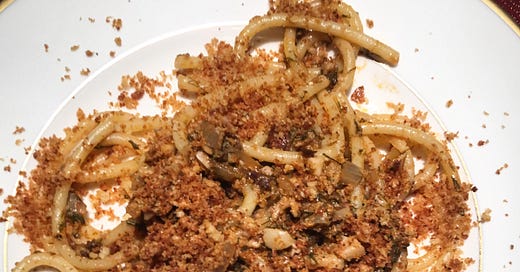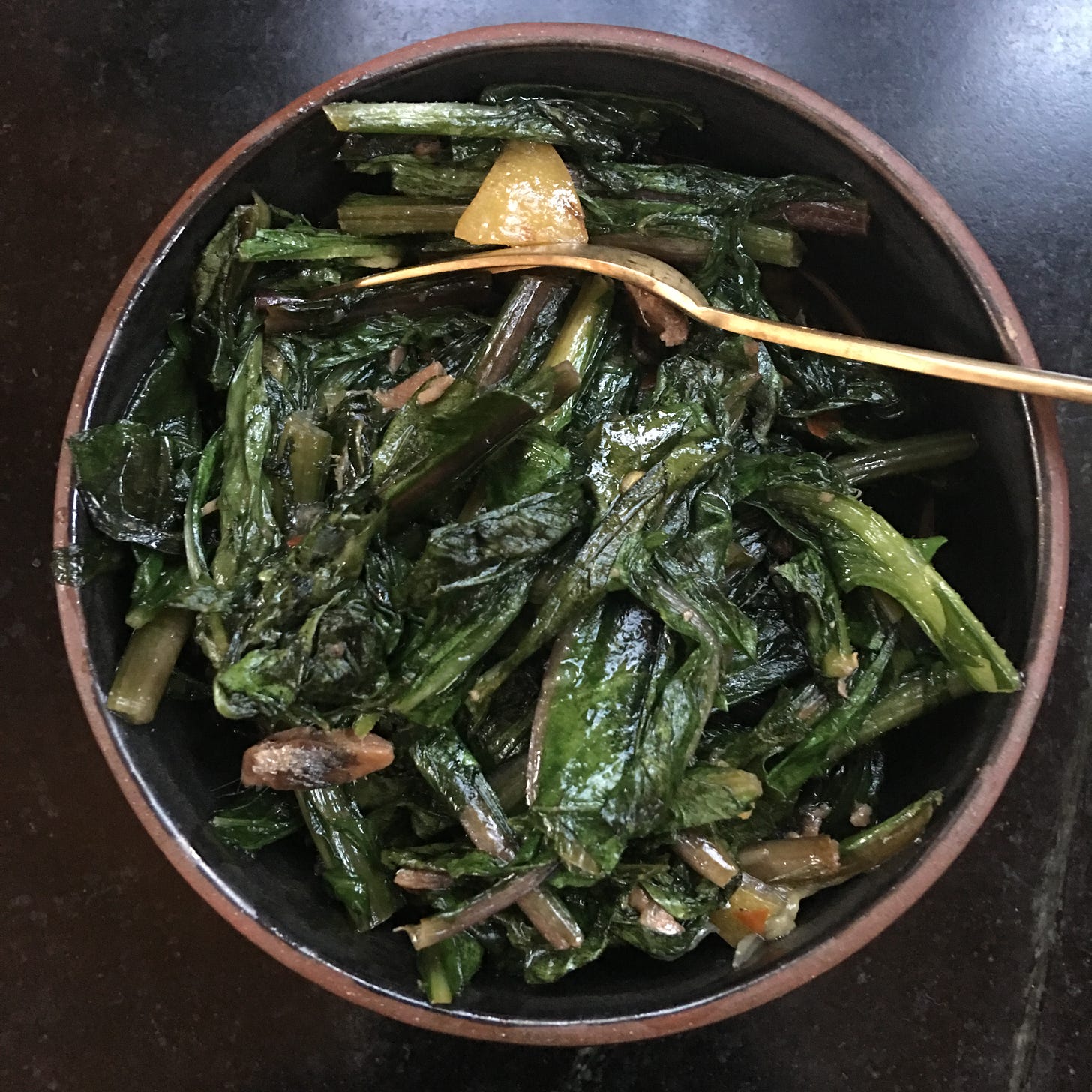Today I saw the first green shoots in the garden. Tiny bright and brave, they were pushing up through the grey and dusty earth of a winter that, while mild, seemed twice as long as usual. I have yet to see a robin, but I know it’s only a matter of short weeks until we can fling open the windows, and only a few short days until spring is officially here.
And while all of this conspires to make us feel lighter – the sweaters being put away, the missing gloves forgotten, the snow tires removed – still, even before the early rhubarb or sweet spring asparagus comes out from under cover and beckon us to eat healthfully, this coming week is one that gives us an opportunity for a serious bit of indulgence.
Blame it on the saints
The truth is that many of our most beloved and favourite foods have their roots in religion. As food ways and feast days spread across the globe, some of those original associations may have been lost in translation. Bread, apples, honey, ghee, dates, tofu - all are foods that have significance beyond their quotidien use.
This week in particular has two distinctly different celebrations, each stemming from a saint. Of course you know about St. Patrick’s Day. If you’re one of the many people who marks this annual tradition on March 17 you may be feeling sad to miss the usual celebrations this year – the parades, the Guinness, the shamrock, the green clothing. (Interestingly St. Patrick’s Day as we know it is largely an American invention - read more about that here - that eventually found its way back home).
The thing that always seems amiss to me about St. Patrick’s Day festivities is the lack of deep food traditions. While a Dubliner might start March 17 with an Irish fry up (that’s breakfast to you and me), and there may be plenty of soda bread, corned beef and cabbage and Guinness around, there really aren’t long-held food traditions associated with this massively popular feast day.
To get to the convergence of ideology and indulgence, we have to go to Italy. Naturalmente.
Feast days and food ways
Throughout Italy, many cities, towns and small villages celebrate feast days honouring their own santo patronos (patron saints). Both famous and obscure, these saints give rise to traditions that go back hundreds of years, creating a thread that weaves ancient beliefs and rites with modern day sensibilities (check this charming website to find out more).
If you live in an urban centre with an Italian community, you might have been lucky enough to stumble across one of these festivals. What you would have seen are processions, the saint’s icon floating high and reverently above the crowd. There might have been the wearing of traditional costumes, special markets, and most certainly food.
Father’s Day, Italian style - fried dough for la festa di San Giuseppe
But to truly appreciate the all-encompassing nature of a feast day celebration, there’s no better place than in Italy itself. So let’s take a trip to Italy this week, to that rocky, beautiful, mysterious, sombre and fiercely joyful place called Sicily. Because on March 19, the entire island celebrates their beloved patron saint – San Giuseppe.
Actually, the Festa di San Giuseppe is celebrated across Italy on March 19, as that is officially Father’s Day (because Saint Joseph is kind of the ultimate dad). Of course Italians have to make every celebration their own, so you’ll find some specialities that are specific to a particular region: frittelle di riso from Tuscany, bigné di San Giuseppe in Rome, zeppole in Naples, sfinci in Sicily (more on those later). What these all have in common is that they are deep fried. Yes, you can find recipes that give alternative versions for baking some of these sweet treats, but why would you?
What you might not find is the distinctly Sicilian iterations of the festa di papa. There, the food traditions are deeper, broader and somehow more mystical.
To the table
It is uniquely in Sicily where you will find the Tavola di San Giuseppe - St. Joseph’s Table. The practice of creating large food altars dates to the Middle Ages. According to legend, a severe drought and famine in Sicily miraculously ended when the farmers prayed to St. Joseph, and the rains arrived. The tradition of erecting altars of abundance as an expression of gratitude began, and still today you will find these very elaborate tables, groaning with food, in private homes, churches and community centres across Sicily (to give you a sense of sheer volume, there can be up to 100 types of food on these altars!)
Cooking for this festa is a serious business in Sicily. The foods represent both the past and the future. The past are the beans, lentils - the foods of winter. The future is represented by the greens of spring: wild mustard, wild fennel, chard. Spices are used to represent richness and prosperity. Savoury is balanced by sweet.
Two of my favourite Sicilian dishes are also consumed during the San Giuseppe feast. The first is a classic: pasta con le sarde - bucatini pasta served with a sauce of sardines, wild fennel, golden raisins, pine nuts, onions, white wine, olive oil, saffron and bread crumbs. The second is less recipe than staple: sautéed bitter greens served either alone or in combination with other ingredients.
And of course there are the sfinci: fried cream puffs served hot with a dusting of cinnamon, confectioner’s sugar, and honey, or, cold and open-faced with a smear of ricotta cream and decorated with candied orange.
You might want to try to make one or all three of these recipes on March 19. There are plenty of versions online for you to seek out (my version of pasta con le sarde is below). If you do, you’ll be part of an ancient tradition dating back hundreds of years. You’ll bring the spirit of Sicily into your kitchen. And you’ll be well-fed to boot.
Pasta con le sarde
serves 4
While this dish is typically made with raisins or currants and pine nuts, I like the clean crunch of chopped almonds instead, an authentic substitution that I learned in Sicily.
Ingredients
Breadcrumb Topping
1 tsp ground fennel seeds
1 1/4 c panko bread crumbs
Kosher salt and freshly ground black pepper
1/4 c olive oil
2 tbsp granulated sugar
1 large garlic clove, peeled and lightly smashed
Sardine Sauce
1 1/2 c minced peeled and cored fennel bulb, fronds chopped and reserved
2 tbsp olive oil, plus more as needed
1 c minced yellow onion
1 large garlic clove, peeled and lightly smashed
1/4 c tomato sauce
1/3 c raw almonds, roughly chopped
1 pound/340g sardines, cleaned and cut into 1-inch pieces
1 tbsp tomato paste, dissolved in 1/2 cup (120ml) dry white wine
Pinch saffron, optional (dissolve this in the wine too)
1 pound (450g) bucatini or spaghetti
Make the breadcrumb topping:
Heat the olive oil a medium skillet over medium heat. Add the ground fennel seed and cook until fragrant. Add breadcrumbs, salt, sugar and garlic clove and cook, tossing, until golden. Discard garlic and transfer breadcrumb mixture to a bowl and set aside.
Make the sardine sauce:
Bring a large pot of water to boil. Add the chopped fennel (not the fronds) and cook until the fennel is tender, about 15 minutes. Drain, reserving water.
In a large skillet or sauté pan, heat the olive oil over medium heat. Add the onions, garlic and drained fennel and sauté until fragrant, being careful not to let either turn brown, 2 to 3 minutes.
Add the reserved fennel fronds, the tomato sauce, the almonds, the wine and saffron if using. Season with salt and pepper to taste. Simmer for 5-7 minutes and then add the sardines. Simmer a further 3-5 minutes, or until the sardines are cooked through (they will break up as they cook). Taste and adjust for seasoning.
Bring the reserved fennel cooking water to a boil, adding more water as needed and salting the water to cook the pasta. When just al dente, drain the pasta, reserving a cup of the cooking water.
Combine the pasta with the sardine sauce, adding some of the pasta water. Bring the sauce to a simmer and stir the pasta with tongs to ensure it is being coated with the sauce. When the liquid has absorbed, serve the pasta, passing the breadcrumb topping separately.









Salivating here...